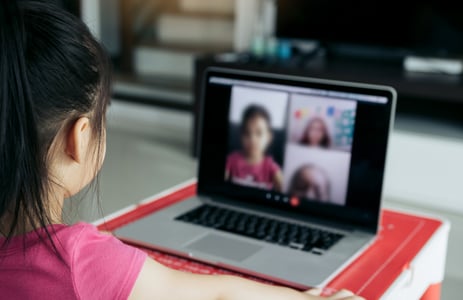
Shared physical presence is a large part of how we’re used to connecting with each other. Strong connections and relationships are important for children who may have recently experienced loss, high stress, or trauma. As teachers connect with children in a virtual setting, it can be more challenging to think about how to create a safe space for learning, sharing experiences, and taking risks.
Forming relationships with children through virtual interactions
Much like in classroom settings, planning for whole group, small group, and individual time with children will ensure they consistently get the various supports they need.
Let’s look at a few ways teachers can still make connections while virtual.
1) Make a Personal Connection
Developing personal connections is an important part of forming and strengthening relationships with children. Think about ways to learn about each other, share your ideas, and have fun together!
- Talk about favorites—toys, games, tv shows, foods.
- Have a virtual dance party—and get any other adults who are present involved too!
- Share positive comments, air hugs, high-fives, and finger hearts.
2) Encourage Peer Connections
Children love being with their friends at school, but they need support to connect virtually. Help children take turns talking, listening, and showing an active interest in each other.
- Play games such as charades, Simon Says, and mirror me.
- Have children do a virtual show-and-tell.
- Meet regularly with the same small groups.
3) Form Emotional Trust
Awareness of children’s needs in a virtual setting requires extra attention to nonverbal cues. Your responsiveness is important. Seeing you as a secure base helps children feel open to instruction and willing to take risks.
- Look for facial and verbal expressions. Match the emotions you see.
- Ask children to share their ideas and perspectives.
- Create special signals children can use to ask for help.
Now that you’ve explored some ways to form relationships in your virtual classroom, use our free planning document to brainstorm your own ideas, set goals, and reflect on your interactions.

